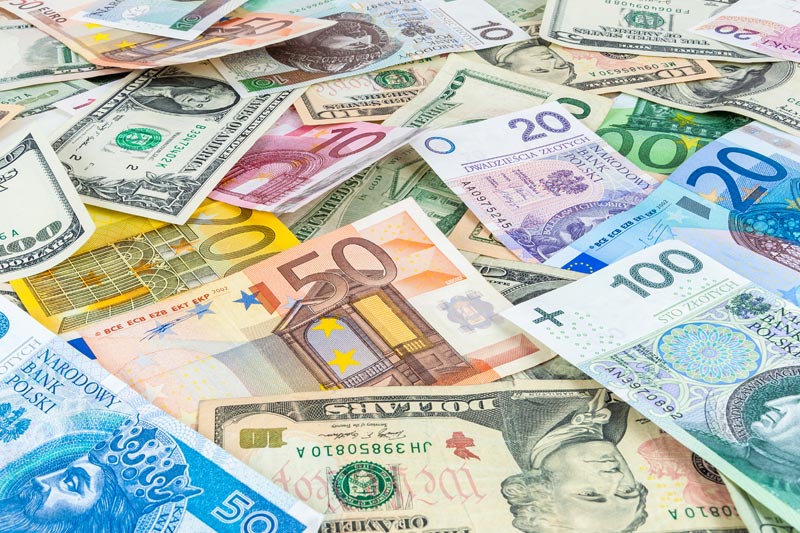Foreign exchange trading reminder: PCE shows inflation slowing, dollar fell to new low in nearly five months, pay attention to nonfarm performance
In early Asian trading on Friday (Dec. 2), the US dollar index fell slightly, hitting a new low since June 30 at 104.56. Earlier data showed that US consumer spending rose steadily in October and inflation fell. It has raised expectations that the Fed is closer to peak interest rates. Investors need to focus on the November US nonfarm payrolls report due out this trading day.
Federal Reserve Chairman Powell said Wednesday (November 30) that it was time to slow rate hikes, noting that “slowing now is a good way to balance risks.”
Investors took comfort in the above remarks, though Powell also said interest rates will continue to rise and that controlling inflation “requires keeping policy at a tight level for some time.”
Edward Moya, senior analyst at OANDA, said: “We’re seeing consumers continue to spend and, on top of that, continued claims are picking up. So we may start to see an increase in unemployment, which I think will support the Fed’s perception that is close to completing its cycle of tightening.”
Moya added, “The market will be looking for a continued decline in Treasury yields, which will also be the reason for the dollar’s weakness.”
Data on Thursday showed that consumer spending, which accounts for more than two-thirds of US economic activity, rose 0.8% in October, in line with economists’ expectations. The September reading confirmed a 0.6% increase.
The Personal Consumption Expenditure (PCE) Price Index rose 0.3% in October, matching September’s gain. The PCE price index rose 6.0% in the 12 months to October.
Other data showed that US manufacturing activity fell for the first time in two-and-a-half years in November, while US construction spending eased in October.
Friday’s November jobs data is the next major focus for the US economy.
The US dollar index closed down 1.22% on Thursday to close at 104.70. It missed the key position of the 200-day moving average of 105.56. If it fails to rally above the 200-day moving average quickly, that could indicate further declines.
It rose 1.15% on Thursday to close at 1.0525. The Asian market was up slightly early in the session on Friday, hitting a high of 1.0538, the highest since June 29th. USD/JPY fell 2% on Thursday to close at 135.33, falling slightly in early Asian trade on Friday to hit a low of 135.03, the lowest since August 18.
It rose 1.64% on Thursday, cleared the key position near the 200-day moving average of 1.2147 and closed at 1.2253 to hit 1.2310, its highest since June 27.
Federal funds futures traders now expect the Fed’s key rate to peak at 4.87% in May, up from 3.83% now. Estimates peaked at over 5% ahead of Powell’s speech Wednesday.
Federal Reserve Governor Bowman said Thursday that the Fed should slow the pace of rate hikes to assess the impact of its rate-hiking cycle. But New York Fed Chairman Williams reiterated that further rate hikes would be needed to ease excessive price pressures.
In addition to the weakening US dollar, market concerns over the outbreak in Asia cooled, which also benefited the currencies of Australia and New Zealand.
It advanced 0.37% on Thursday to hit a new high since September 13 at 0.6844 and closed at 0.6811.NZD/USDIt advanced 1.21% on Thursday to a new high of 0.6398 since Aug. 15 and closed at 0.9370.
Synthesis of institutional points of view
[Modello PILNow: downgrade della previsione di crescita economica del quarto trimestre degli Stati Uniti dal 4,3% al 2,8%]
The Atlanta Fed’s GDPNow model estimates fourth-quarter real GDP growth in the US to be 2.8%, which is far lower than the 4.3% forecast on Nov. 23, according to Dec. 1 data. . Expectations for fourth-quarter real personal consumption spending growth fell from 4.8% to 3.2% following recent data from the US Census Bureau, the US Bureau of Economic Analysis and the Institute for Supply Management. %, while fourth-quarter gross domestic investment growth expectations increased by 1.0%. % At 2.0%, the two are slightly offset. In addition, the projected contribution of changes in real net exports to real GDP growth in the fourth quarter decreased from 0.64 percentage point to 0.16 percentage point.
【Invesco: Prospects for Bond Investors Next Year】
A possible recession in 2023 bodes well for government bonds following higher (US) bond yields this year, Invesco said in its 2023 outlook. Heading into 2023, with a recession as the more likely scenario, i government bonds will generally do just fine. Rising yields in 2022 mean government bonds now offer attractive yields. The upside of a painful sell-off in fixed income in 2022 is that valuations now look more attractive, with higher yields than at any point in a decade.
[Deutsche Bank: Il calo del franco svizzero è ancora limitato e ci vorrà del tempo prima che l’euro raggiunga la parità rispetto al franco svizzero]
As the Swiss National Bank continues to take measures to curb inflation, room for further declines in the Swiss franc is limited. SNB Deputy Governor Schlegel clarified that the central bank will continue to fight inflation, which supports expectations of further rate hikes in December. In view of the impact of the devaluation of the Swiss franc on inflation, the Swiss National Bank also reserves the right to intervene on the depreciation of the Swiss franc. In our view, it will take some time before EUR/CHF truly reaches parity


